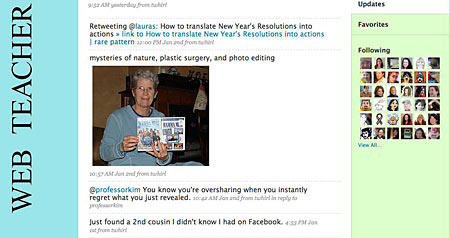Absolutely everybody wants to get paid $100,000 to live for six months on Australia’s Hamilton Island in the Great Barrier Reef and be the island caretaker. It’s the best job in the world. How did the job manage to go viral and become a sensation? More . . .
Absolutely everybody wants to get paid $100,000 to live for six months on Australia’s Hamilton Island in the Great Barrier Reef and be the island caretaker. It’s the best job in the world.
It sounds so easy. Keep an eye on the pool, stroll on the beach, write a weekly blog post, live in a beautiful three bedroom house/office, and make money doing it. You do have to be able to write in English, swim, and be over 18. Not the skills you normally see on a resume, but requirements, nevertheless.
So many people are willing to drop everything and go down under for 6 months that the number of applicants crashed the site. There are only 35 days left to apply at this web site, if you’re interested.

Finding BonggaMom’s I’ve Found My Dream Job expresses the desire to run away to a beautiful isle with sandy beaches and rolling surf, but tempers it with a dose of reality:
I suppose asking the kids to get themselves to school by themselves for 6 months is a bit unreasonable. Oh, well.
That’s my thought, too. It sounds like heaven, but who can leave everything behind and run away to paradise? Apparently a lot of people. Outnumbered 2 to 1: Fine, I’ll get a J-O-B summarizes the emotional pull of this job quite well.
So, let me get this right. You are going to pay me for something that I currently do now for free? I can live on an island paradise as opposed to the frozen tundra wasteland I currently call home? I can wear flip flops and sarongs as opposed to layers of sweats and college sweatshirts with an outer layer of blanket?

This image of Hamilton Island came from The Best Job in the World web site. Which brings me to the brilliance of the Tourism Queensland team that put this site and this job together. Raise your hands now—had you considered a vacation at Hamilton Island before hearing about this job? No? Well, what about after reading about the job, looking through the web site’s luscious photos of decadent irresponsibility and worry-free living like the one above? Is Hamilton Island on your list of places to visit now? If you said yes, then Tourism Queensland has done its job.
The job went viral. It was a sensation on Twitter, as you can see in this image.

The job was world news everywhere like this story from CNN.
I don’t think merely filling the job was the goal. I think the unspoken goal was to bring attention to Hamilton Island as a vacation destination. If the cost of the job and the nicely done website brings returns on the investment with tourist dollars, then the goal is achieved.
How did Tourism Queensland succeed in creating a viral sensation? I think these are some of the reasons:
- they tapped into a universal desire (get away from it all and bask on a beach)
- they came up with a hook—the best job in the world—that was guaranteed to grab attention
- they tied it to a huge paycheck that is very attractive and feels very much like winning a huge sum for doing almost nothing. Something for nothing always attracts interest.
- they packaged it beautifully in an attractive site with stunning visuals that emphasized the lure of paradise for both the job holder (and the potential tourist to Hamilton Island)
- they made it easy to apply for the job. More importantly, it’s easy to learn more about the islands of the Great Barrier Reef and to find a vacation package to get you there.
Are you going to apply? Good luck if you do. If you don’t, perhaps you can still profit from a few ideas about what makes an idea worthy of going viral.
Cross posted at BlogHer.




